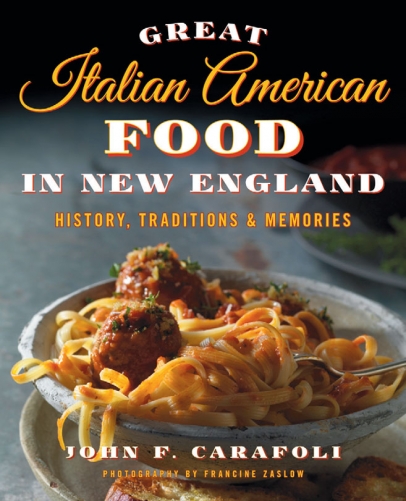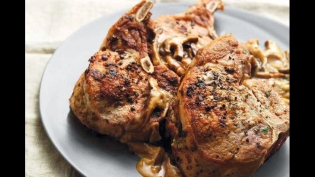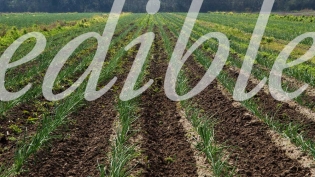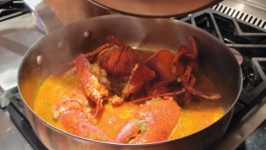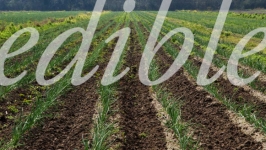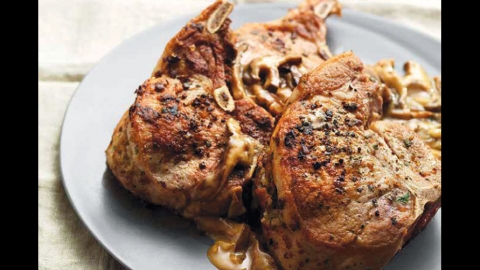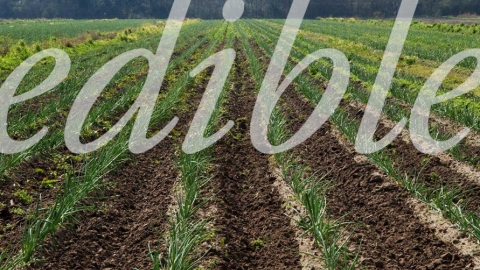Edible Reads
I’m walking up Union Street in Lawrence, Massachusetts with international food stylist, consultant and food writer, John Carafoli. We’re searching for the red-and-white-striped awning of Fisichelli’s Pastry Shop, and eventually we find it. Carafoli excitedly opens the door and waves me in as the smell of freshly baked bread surrounds us. We’re greeted by owner Nina Fisichelli whose grandfather Orazio was born in Sicily and moved to Lawrence in 1915 when he opened the shop. Orazio delivered freshly baked bread by horse and buggy, and stored his horses just down the road in a structure that still stands today, but is now an automotive shop. I’m so sucked in by this story that as Carafoli is gathering information from Nina about the pastry shop, I’m torn. My mind wants to take everything in. I want to hear Nina’s stories, but I want to see the automotive shop—and of course I don’t want to leave the store without sampling Fisichelli’s Italian almond macaroons. That’s what discovering a tucked-away bakeshop with John Carafoli is like. Except that I’m living the moment vicariously through his new book, Great Italian American Food in New England: History, Traditions & Memories.
Through his journey, Carafoli doesn’t just deliver you the “history, traditions and memories” from extensive research, but rather he takes the reader along for the ride as he collects it. For instance, Alba Produce on Parmenter Street in Boston wasn’t just not on my radar, it would be difficult for me to find if even it was—it doesn’t have a sign or a name out front. But as I turn the page to read the recipes of Olive Schiacciate and “special” vinegar peppers, Carafoli’s writing delivers the fragrances of thyme, fennel and garlic in owner Bruce Alba’s marinades. While learning how to make Shells Stuffed with Winter Squash, Zuppa di Pesce, Lamb and Eggplant Meatballs and Quince Poached in Vin Santo and Spices, the reader is introduced to characters like the Campo family whose roots run deep in Baveno, Piedmont, but now own Campo Di Vino in Barre, Vermont, simply because “there was no good sausage in Barre.” (Their family’s passed-down secret sausage recipe changed that.) Following the Campo’s story in the book is Carafoli’s surrogate mother, Rose Sorenti’s, handwritten recipe for antipasto—coincidentally it’s the same recipe used by the Campo family.
Carafoli has been around the block when it comes to food writing. He’s authored two children’s cookbooks (Look Who’s Cooking and The Cookie Cookbook) as well as the well respected Cape Cod Chef ’s Table - Recipes from Buzzards Bay to Provincetown. He has been published in numerous publications including The New York Times, The Boston Globe, and Edible Cape Cod where he won an Eddy for Best Use of Recipes in a feature article, so it’s no surprise that his latest publication is a real page-turner. For instance, there’s a shocking admission found on page 60 where Mary Ann Esposito, the host of Ciao Italia, the longest running cooking program in America, and author of a beautiful cookbook of the same name, tells Carafoli, “I hate cooking”! When pressed for a reason why she goes on how when she was growing up “everything was made from scratch. Everything!” It took a long time for Mary Ann to see all the drudgery as part of a long and proud heritage.
In the book you’ll journey back to the mid 1950s and step into the kitchen of Josephine and Battista’s ice cream shop in Amherst, New Hampshire. As the shop grew in popularity and people demanded more delicious varieties of food, Josephine would prepare spaghetti with her homemade tomato sauce in the shop kitchen, which eventually morphed into a restaurant that introduced something brand new to Southern New Hampshire called “pizza”. In the Primi—Meat, Poultry and Fish section of the book you can almost hear the crash! that launched D&D Market of Hartford Connecticut, a market which literally started over a broken glass bottle of milk. Back in the 1920s the current D&D owner Daniel D’Aprile’s grandfather Vito was working as a manager at an ethnic grocery store. When a customer accidentally dropped the bottle of milk the owner told Vito to charge her for it. Being incensed by the notion of charging the woman for her mistake (she also happened to be a regular customer) Vito walked out and soon opened D&D Market, which put his old boss out of business within a year.
Whether you grew up in an Italian neighborhood, of just watched Italian families having meals in the movies, you usually associate the meals with heated arguments followed by boisterous laughter, back slapping and neck grabbing, and copious amounts of food and wine, but in Great Italian American Food in New England it’s the tender moments that make the book. Carafoli takes us into his grandmother Inez’s kitchen, where homemade pasta sauces and cacciatores are bubbling on the stove, and then down the steps into his grandfather Luigi’s musty and poorly lit cellar full of homemade wine.
In the Secondi—Pasta, Pizza and Bread section we spend a sunny afternoon with Wolf Meadow Farm’s cheesemaker Luca Mignogna, who thanks the cows every time he takes their milk. “They know I am doing something with the milk,” he tells Carafoli. “I don’t think they have a clear idea with cheese making, but they know that I am using the milk.” He plays music for the cows, pets them, and often tells them “I love you”. Mignogna believes that a serene setting creates the highest quality of milk, which in turn creates his very unique cheese.
Toward the back of the book Carafoli has a sit down with Alba Benedini Rossi, “ninety-eight-and-three-quarters years old” as she puts it, whose parents came to Vermont from Carrara, Italy in 1911. Alba’s Torta Di Riso (rice cake) is one of the last recipes in the book. Her still sharp memories of growing up with family chickens and working in the vegetable gardens warms the readers heart, but in her next breath the mood changes as she reflects on how sad it is too lose such a beautiful language from her life. “I don’t speak it much anymore because there’s nobody around to talk to,” she says.
I have been fortunate enough to have broken bread several times with John Carafoli (in real life). I’ve enjoyed wine over a sizzling pot of his signature Bagna Cauda on his back deck in West Barnstable (a recipe that’s in the book) and have sat at his Thanksgiving table (a sublime dinner, never to be forgotten). Inevitably Carafoli’s unabashed love of his Italian background always weaves its way into the evening’s conversation and you can hear the passion in his voice, and you can see it in his eyes. In Great Italian American Food in New England John has successfully delivered exactly where that passion comes from, and with the 70 recipes steeped in Italian-New England family traditions, you can certainly taste where it comes from as well.


